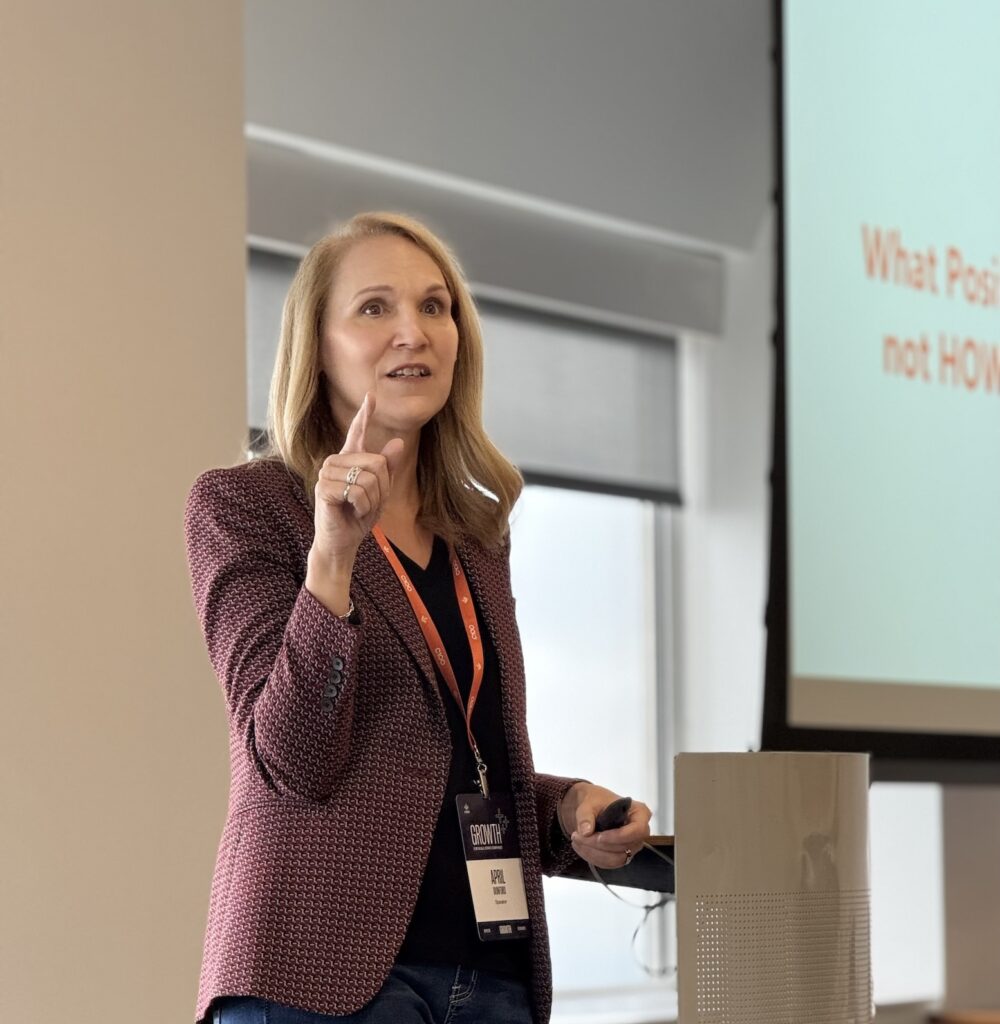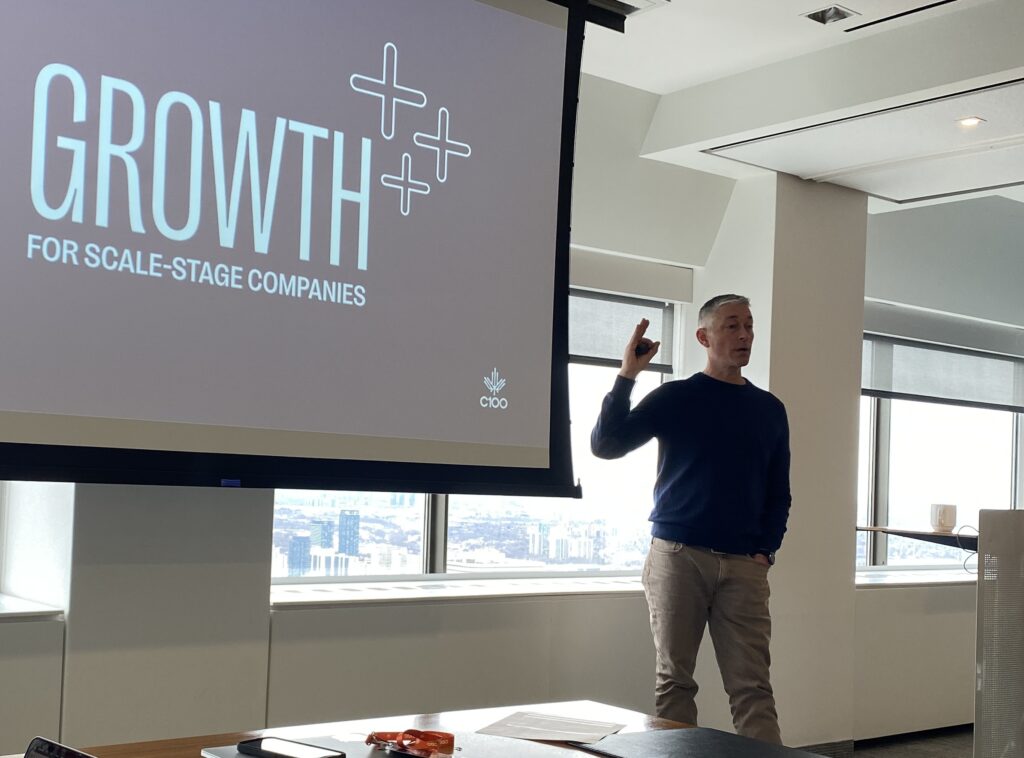Scaling a go-to-market (GTM) function requires more than just hiring sales reps and hoping for the best. It demands a strategic, data-driven approach, deep understanding of a clearly defined ideal customer profile (ICP), and commitment to continuous improvement.
In February 2024, C100 hosted a GTM-focused workshop as part of its Growth Program. Canada’s top scale-stage founders and executives gathered in Toronto to learn from some of the country’s best GTM experts. The sessions, led by Kyle Norton, Geoff Baum, George Kyriakis, April Dunford, James Yersh, Julie Bruk, Mark Bergen, and Alia Pirani, covered GTM efficiency, positioning, partnerships, revenue optimization, post-sales expansion, and scaling sales teams.
Here are some of the top takeaways from our expert speakers:
Data is Your GTM Cheat Code
Kyle Norton emphasized that data is the foundation of an efficient GTM strategy. Without it, sales teams waste time chasing unqualified leads. Amazingly, companies waste up to 40% of sales time on “customers” who aren’t going to buy. That’s no way to win in a competitive market. Kyle outlined key strategies to improve GTM efficiency:
- Ensure top-of-the-funnel leads are highly qualified. That’s non-negotiable.
- Sales reps shouldn’t be responsible for qualifying data—build structured systems instead.
- Scoring your market matters—use data-driven models to prioritize deals with the highest likelihood to convert.
- Leverage automation—scrapers, enrichment tools, and structured call data help improve accuracy.
When done right, good data eliminates inefficiencies, increases conversion rates, and drives predictable revenue growth.

Build a Repeatable GTM Playbook
Scaling from founder-led sales to a structured, repeatable sales process is one of the hardest transitions a startup makes. Geoff Baum shared how companies can navigate this shift:
- Create a GTM playbook that maps out the buying stages from the customer’s perspective.
- Reverse-engineer the sales process to understand what customers need at each stage AND be prepared to give them what they need at every step of their buying journey.
- Train your team relentlessly—the best sales reps are made, not found.
- Audit the use of playbooks—consistency is key to scaling success.
Without a scalable, repeatable and teachable go-to-market process, even the best products will struggle to scale. What’s more, the process of developing your GTM playbook is a great way to get your entire leadership team involved and aligned on your GTM and bigger company strategy.
Define Your Ideal Customer Profile (ICP) and Stick to It
Mark Bergen emphasized that many sales teams fail because they haven’t nailed their ICP. Signs of a poorly defined ICP include:
- Low conversion rates and extended sales cycles
- Overreliance on discounting or special deals
- High churn and poor Net Revenue Retention (NRR)
To fix this, companies must clearly document who their best-fit customers are and structure their sales and marketing efforts accordingly. A well-defined ICP ensures teams focus on high-value prospects instead of wasting time on unlikely buyers.
Positioning: The Foundation of GTM Success
April Dunford stressed that poor positioning is one of the biggest barriers to scaling a GTM motion. Companies often struggle because they:
- Fail to differentiate from competitors
- Don’t clearly articulate their unique value
- Position themselves in the wrong market category
April’s advice? Start by identifying what customers would use if your product didn’t exist, then define what makes your solution unique, valuable, and relevant to your target audience. Strong positioning helps provide customers the context they need to evaluate your product and provides the foundation for scalable growth.

Build Partnerships That Drive Leverage
George Kyriakis shared insights on strategic partnerships, emphasizing that not all partnerships are created equal. To maximize success:
- Prioritize depth over breadth—fewer, high-value partnerships outperform scattered, low-impact deals.
- Clearly define partner ICPs—just like with customers, alignment matters.
- Ensure internal buy-in—a partnership strategy is only as strong as the internal support behind it.
Done right, partnerships unlock new channels, drive revenue, and expand market reach.
Optimize Revenue Through Recurring Impact
Alia Pirani shared the “bowtie funnel” approach to maximizing recurring revenue. The key insight? Revenue doesn’t stop at the sale—it also happens after the customer sees value. Expansion of current accounts, when done well, can deliver another critical revenue driver for companies and turbocharge growth.
- Onboarding is the first impact moment—invest in it.
- Retention depends on recurring impact—if customers continuously see value, they stay.
- Customer success must speak the same language as sales—misalignment leads to churn.
A great GTM strategy extends beyond acquiring customers—it ensures they succeed long-term.
Scaling Requires Strong Revenue Operations
Julie Bruk emphasized that ops teams are critical to GTM success—they provide alignment, visibility, and efficiency. She outlined when and how to invest in revenue operations:
- Early-stage startups (Seed–Series A) should focus on foundational processes.
- Growth-stage companies (Series B–C) must scale automation and analytics.
- Late-stage companies (IPO track) should build predictive modeling, advanced lead scoring, and cross-functional alignment.
Without proper ops investment, companies struggle with inconsistent data, process inefficiencies, and poor sales visibility.
Align Sales, Marketing, and Customer Success
At scale, the best-performing companies align all GTM functions—from sales and marketing to customer success. James Yersh highlighted that:
- Sales cycles need clear KPIs—dissect the funnel to identify areas for improvement.
- Onboarding is a revenue driver—treat it as an investment, not a cost center.
- Data-driven decision-making is critical—track performance metrics, iterate, and refine.
A unified GTM approach ensures sustainable, long-term growth.
Scaling GTM the Right Way
The insights shared at C100’s GTM-focused workshop emphasized that efficient, scalable sales and marketing require structured processes, data-driven decision-making, and strong team alignment.
Founders can build a GTM engine that drives long-term success by optimizing ICP, refining positioning, leveraging partnerships, and investing in operations.
C100’s Growth Program continues to equip Canada’s top tech companies with the strategies, frameworks, and expert insights needed to scale successfully.
Want to learn more? Stay tuned for future workshops and insights from the Growth Program.


